The XG Platinum and XG Platinum Plus lines are the first Cooler Master PSUs using an in-house platform. Most brands just go to a factory (aka OEM), get a platform, and put their badge on it after some minor changes (different caps, fan, etc.) This is not the case with the XG lines because Cooler Master has a team of PSU engineers who designed and developed their platform. CM wants to do more in the PSU market and having an entire team of engineers is a great start. Since CM doesn’t have a factory to produce its PSUs, for the XG line, it went to Fusion Power which is also known as Xin Hui Yuan Tech or XHY.
The differences between the XG and XG Plus lines are the built-in screen, the ARGB fan, and the compatibility with the MasterPlus+ software. The XG Plus units have a digital communications bridge allowing them to “talk” with the system. Users can use the MasterPlus+ software to control the ARGB lighting, change the fan speed profile and control the information shown on the LCD screen. You will have to pay more to get the XG Plus units, so I expect that most users will opt for the plain XG ones, which use the same platform without the extra gimmicks which affect the price.
Cybenetics Report
In today’s review, I will look at the XG650, so let’s not lose any more time and move to the main subject.
- Manufacturer (OEM): XHY (Cooler Master Platform)
- Max Power: 650W
- Efficiency: 80 PLUS Platinum, Cybenetics Platinum
- Noise: Cybenetics A++ (<15 dB[A])
- Form Factor: ATX12V v2.53
- Alternative Lower Power Mode support: ✓
- Power 12V: 649.2W
- Power 5V + 3.3v: 100W
- Power 5VSB: 15W
- Cooling: 140mm Fluid Dynamic Bearing Fan (DWPH EFC-14E12D)
- Modular Design: Yes (Fully)
- Connectors: 2x EPS, 4x PCIe 6+2 pin
- Dimensions (W x H x D): 150 x 85 x 160mm
- Warranty: 10 years
- OCP (Cold @ 21°C): 12V – 150.83%, 5V – 140.5%, 3.3V – 138%, 5VSB – 243.33%
- OCP (Hot @ 40°C): 12V – 151.2%, 5V – 127.5%, 3.3V – 127.5%, 5VSB – 243.33%
- OPP (Cold @ 21°C): 981.35W (151.16%)
- OPP (Hot @ 39°C): 985.21W (151.76%)
- OTP: ✓ (143°C @ secondary side)
- SCP: All rails with earth: ✓
- PWR_OK: Proper Operation
- NLO: ✓
- SIP: Surge: MOV, Inrush: NTC Thermistor & Bypass relay
OCP triggering points are set high on the 12V rail, and the same applies to over power protection. Usually, high-end, low, and mid-capacity PSUs have high OCP and OPP to deal with nasty power spikes.
Parts Description
| General Data | |
| Manufacturer (OEM) | Xin Hui Yuan Tech (Fusion Power) – Cooler Master Design |
| PCB Type | Double-Sided |
| Primary Side | |
| Transient Filter | 4x Y caps, 2x X caps, 2x CM chokes, 1x MOV |
| Inrush Protection | NTC Thermistor 10D-20 (10 Ohm) & Relay |
| Bridge Rectifier(s) |
2x GBU1506ULV (800V, 15A @ 100°C)
|
| APFC MOSFETs |
2x NCE Power NCE65TF130 (650V, 18A @ 100°C, Rds(on): 0.130Ohm)
|
| APFC Boost Diode |
1x CDP0865G1
|
| Bulk Cap(s) |
1x TK (450V, 470uF, 2,000h @ 105°C, LGW)
|
| Main Switchers |
4x NCE Power NCE65T180F (650V, 13.2A @ 100°C, Rds(on): 0.180Ohm)
|
| Digital Controllers | Champion CM6500UNX |
| MCU | Champion CM6901T6X |
| Topology |
Primary side: APFC, Full-Bridge & LLC converter
Secondary side: Synchronous Rectification & DC-DC converters |
| Secondary Side | |
| +12V MOSFETs | 4x Excelliance MOS EMP16N04HS (40V, 100A @ 100°C, Rds(on): 1.6mOhm) |
| 5V & 3.3V | DC-DC Converters: 2x Excelliance MOS EMB04N03A (30V, 55A @ 100°C, Rds(on): 4mOhm) & 2x Excelliance MOS EMB07N03 (30V, 17A @ 100°C, Rds(on): 7mOhm) PWM Controller(s): ANPEC APW7159C |
| Filtering Capacitors | Electrolytic: 2x Nippon Chemi-Con (105°C, W), 3x Nippon Chemi-Con (2-5,000h @ 105°C, KZE), 9x Nippon Chemi-Con (4-10,000h @ 105°C, KY), 2x Nippon Chemi-Con (5-6,000h @ 105°C, KZH) Polymer: 21x FPCAP |
| Supervisor IC | IN1S313I-SAG |
| Fan Model | DWPH EFC-14E12D (140mm, 12V, 0.80A, Fluid Dynamic Bearing Fan) |
| 5VSB Circuit | |
| Rectifier |
1x 45R10S SBR
|
| Standby PWM Controller | Excelliance MOS EM8569C |
It is always nice to see new players on the field. After years of design and tuning, CM finally delivered its first platform, a full in-house design. The design is clean, and the PCB is large enough to allow for good airflow. The number of electrolytic caps on the secondary side is satisfactory, and CM also used a large number of polymer ones to reduce ripple. The solder side of the PCB doesn’t look complex, and the soldering quality is good.
The bulk cap in the APFC converter is not provided by a top Japanese brand, which usually is the case in high-end PSUs, but the one used has a high voltage rating, which is beneficiary for its lifetime.
Load Regulation
Load regulation is tight on all rails.
Ripple Suppression
Ripple suppression is not among the best I have seen so far; still, it is pretty good.
Transient Response
I would like to see within 1% transient response at 12V and below 3% at 3.3V. More capacitance is required on the secondary side and probably faster feedback to improve transient response.
Hold Up Time
The hold-up time is long, and the power ok signal is accurate, so I have nothing to complain about here.
Efficiency Measurements
Efficiency with 2% should be above 70%. In general, CM should increase efficiency with light and super-light loads.
Average Efficiency
The average efficiency is high enough.
Average Efficiency 5VSB
The 5VSB rail is efficient.
Average PF
There is room for improvement in the APFC converter’s performance with 230V input.
Average Noise
Average noise is crazy low! It is so low that I think that my sample probably had a problem with the fan speed control since the fan barely worked, even under extra-tough conditions.
Timings
The PSU supports Alternative Low Power Modes, which the ATX 3.0 spec requires.
Overall Performance
The overall performance is almost on par with the RM650x, and this is noteworthy given that this platform was entirely developed by CM’s team. It is not easy to make something as good with the first try, and with some more tuning, the XG650 can go even higher in this chart.
Epilogue
It took CM long enough to build its platform, but the result is good. Meeting the Corsair RM650x eye-to-eye is not easy, and CM’s engineers should be proud of their work. Indeed there are several things that need fixing, the most important being the transient response. The more expensive version of this unit, the XG Plus, looks interesting, and the fact that it allows you to set your fan speed profile is a nice feature, but it costs more, so I am not sure if most users will prefer it. I remember that Corsair also had a more advanced version of the RMx line, called RMi, which eventually was pulled out from the market because most preferred the RMx units. Most PC parts are already over-complicated, offering tons of options through the corresponding applications, so users want a PSU that works well, is reliable and has high efficiency.
Buy it here- Full power at 47 degrees Celsius
- High overall performance
- Good build quality
- Efficient
- Tight load regulation
- Good ripple suppression
- Silent operation
- Long hold-up time
- Efficient 5VSB rail
- Low inrush currents
- Two EPS and four PCIe connectors
- FDB fan
- Compatible with the alternative sleep mode
- 10-year warranty
- High vampire power
- Efficiency with light and super-light loads needs boosting

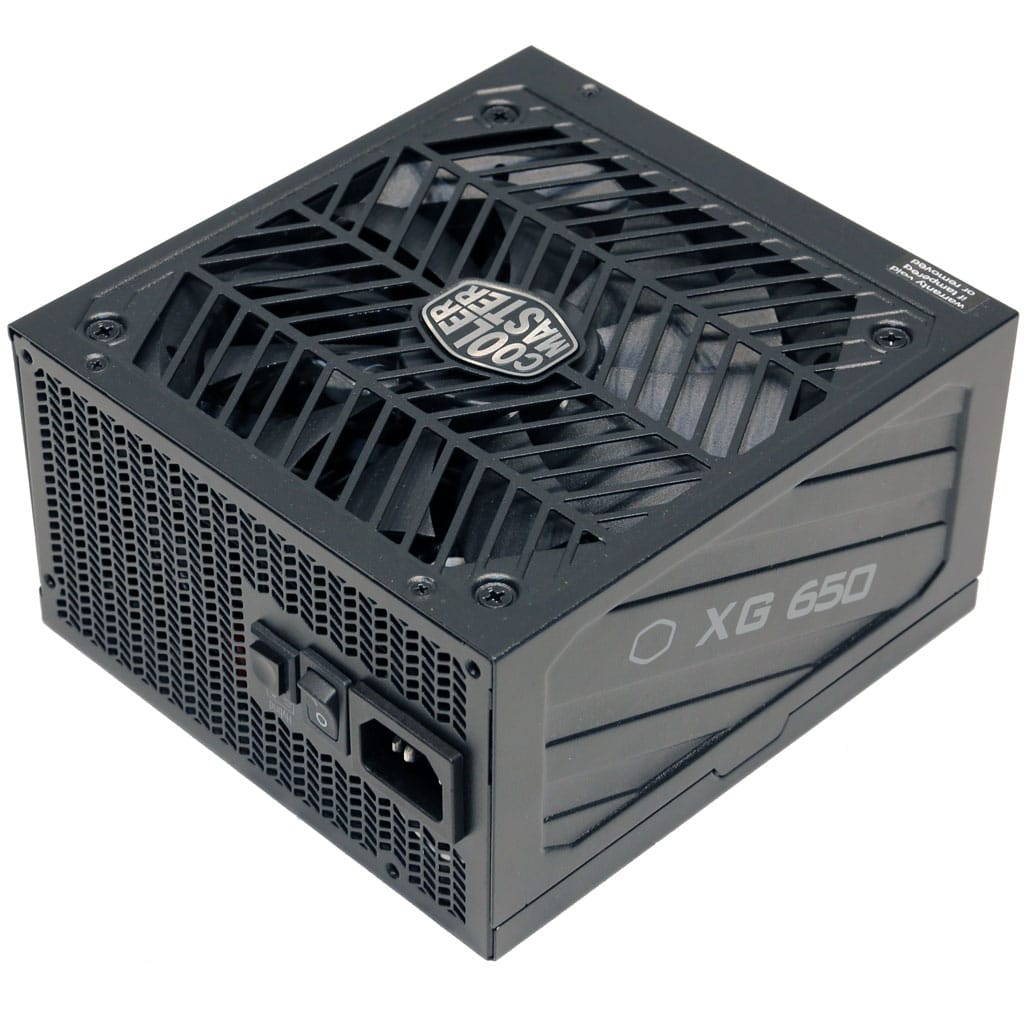

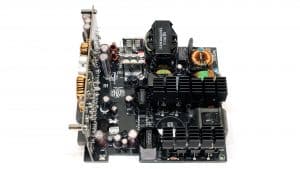







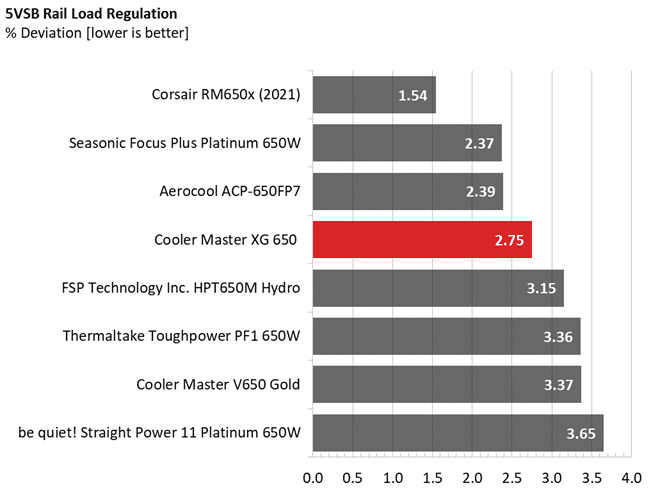


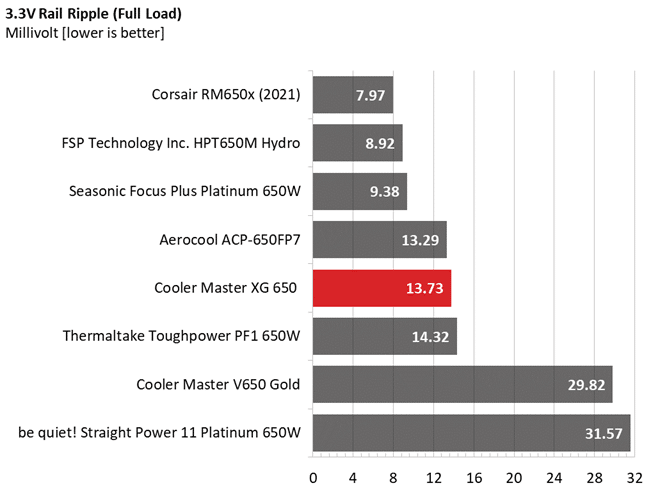











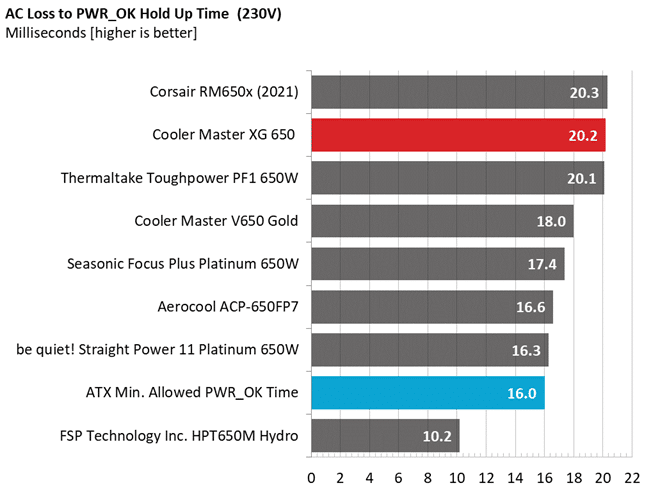



















I am sorry, but we don’t sell fans.
i would like to buy an 140mm Fluid Dynamic Bearing Fan (DWPH EFC-14E12D) for my power supply
can you tell me the price + transport cost to Belgium ?